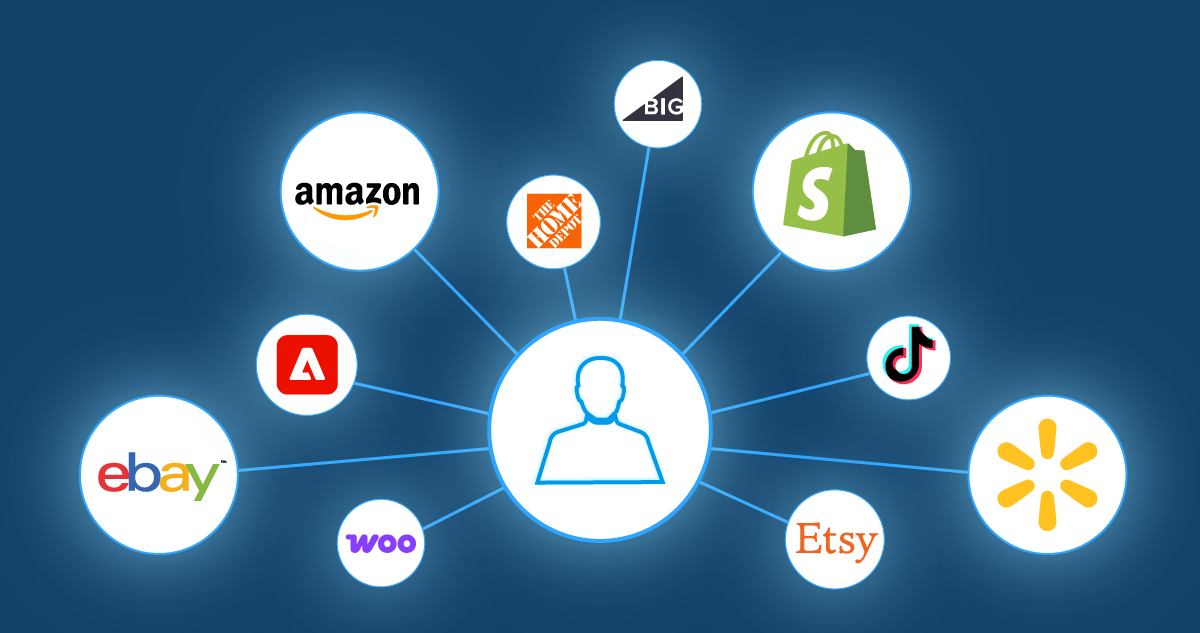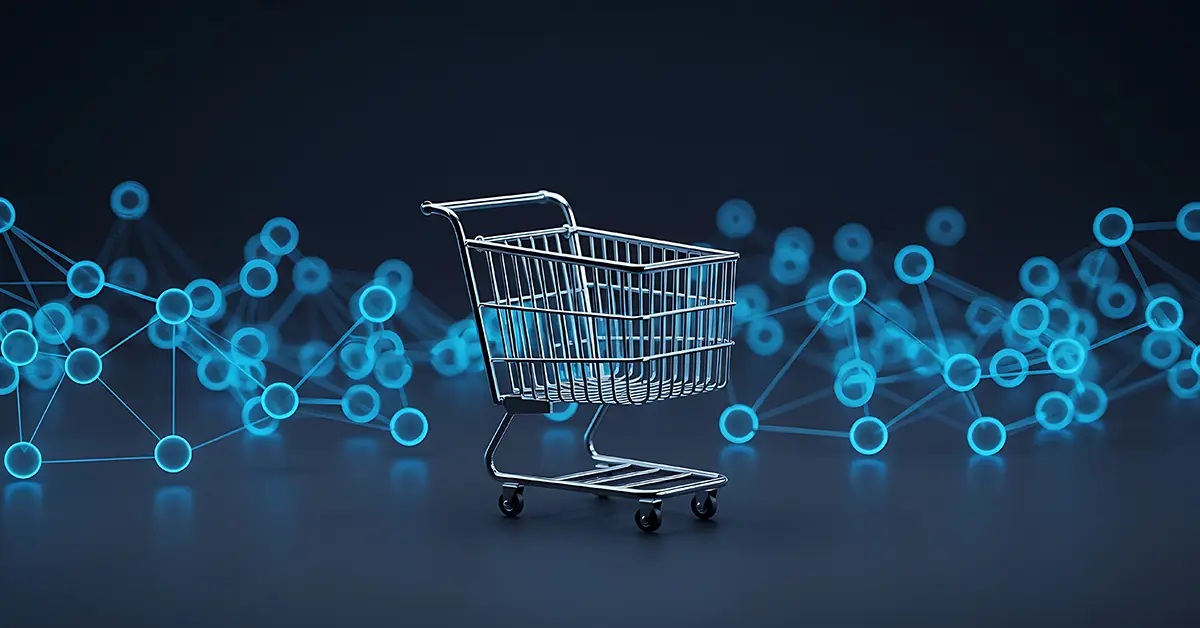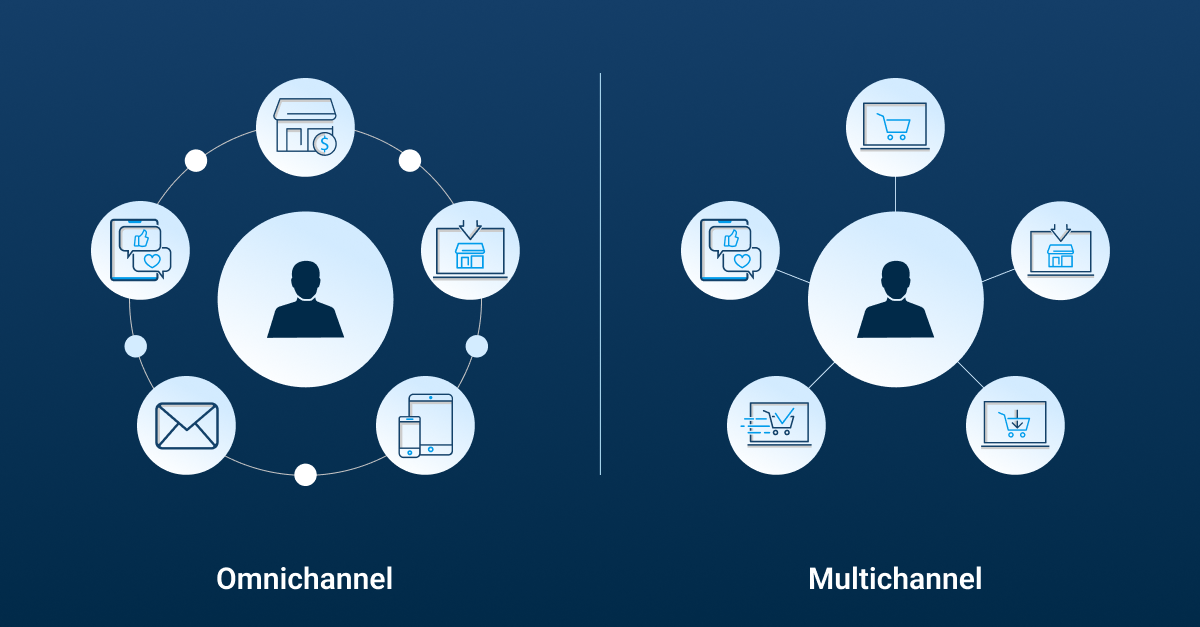Key Takeaways
- Multichannel = more reach. Omnichannel = personalized customer experience.
- Growing brands should start with multichannel, then evolve if needed.
- Without the right operational systems, expanding sales channels is risky.
- Descartes helps you scale multichannel operations without hiring more people.
As direct-to-consumer (DTC) brands confront economic uncertainty and slowing consumer demand, many face a tough mandate: grow revenue quickly while holding the line on operational costs. One of the fastest ways to increase online sales is to expand where you sell. But how you expand—and how you manage the backend—can make or break profitability.
Should you go multichannel or omnichannel? What’s the difference, and which is right for your brand? Let’s break it down.
Important topics:
What is multichannel ecommerce?

Multichannel ecommerce means selling your products across more than one online platform, such as Amazon, eBay, Walmart, TikTok Shop, and your own website. It’s a low-barrier strategy to reach more customers with little upfront cost. Each sales channel operates independently, which offers flexibility but also brings operational complexity.
For DTC ecommerce brands, this means opportunities to:
- Diversify risk—if one channel goes down or underperforms, others keep you afloat.
- Reach more customers across both domestic and international markets.
- Start with a low upfront investment—most marketplaces just require a seller account and listing fees.
- Test new channels quickly to find what works best for your brand.
- Adapt to trends like social commerce on TikTok or marketplace spikes during peak seasons.
What’s the difference between multichannel vs. omnichannel?
Though the terms multichannel and omnichannel are often used interchangeably in ecommerce, they really serve different goals:
Multichannel = More places to sell. Each sales channel operates independently. Customer experience and operations aren’t necessarily connected.
Omnichannel = Unified, connected customer journey across every channel. Customer data is shared, personalized, and leveraged online and offline.
In short: Multichannel is about reach. Omnichannel is about a personalized experience.
Who should use multichannel strategy vs. omnichannel?
Not every DTC brand needs a highly personalized omnichannel strategy. Multichannel ecommerce is often the better choice for:
- Digital-first brands expanding to marketplaces
- Lean ecommerce teams looking to minimize operational costs
- Brands selling commoditized or price-driven products
- Companies focused on reach and volume—not luxury or hyper-personalized experiences
If your goal is to grow revenue quickly in the simplest, most cost-effective way possible, multichannel is likely the better fit.
Learn more about the business cases best suited to multichannel ecommerce in: Multichannel Ecommerce: The Comprehensive Guide to Selling More Online
Why multichannel = survival now

D2C ecommerce businesses face a chaotic, rapidly evolving, tech-saturated world. You also feel the ripple effects of global tariffs and geopolitical instability as your profit margins erode.
To survive, your brand must continuously evolve. Multichannel ecommerce can give you the tools to adapt, stay competitive, and navigate market shifts. Here are several situations where multichannel makes the difference for DTC brands:
- Incorporating AI feels overwhelming
- You’re losing business to social-savvy brands
- Your customers are anxious
- You’re missing out on mobile-first shoppers
Learn more about multichannel ecommerce for DTC brand survival
How to start selling on multiple marketplaces

Becoming a multichannel seller may feel intimidating, but the process is really straightforward:
- Research new channels: Where is your audience shopping? Which marketplaces are your competitors using? What are the seller fees and requirements?
- Audit your fulfillment workflow: Can your warehouse keep up when volume spikes? If not, upgrade your tech stack to handle higher volumes without more workers.
- Organize product data: Assign SKUs, prepare listings, and consider using a product information management (PIM) system to keep it all updated.
- Create seller accounts: Sign up for the new marketplace(s) you selected.
- Connect systems: Integrate your new sales channels with your tech stack to manage inventory, orders, warehouse, shipping, accounting, and purchasing.
- List and market your products: Launch product sales on your new marketplaces; promote them on your website, social accounts, and other channels.
- Optimize operations: Track order flow, inventory accuracy, fulfillment speed, and other key performance indicators; adjust workflows as needed.
When you start to see order volumes growing faster than your team can handle, that’s the sign to upgrade to an integrated warehouse management system like Descartes Peoplevox.
What about warehouse operations?

Multichannel ecommerce is a smart lever for growth—but only if your warehouse operations can keep up. This is where most DTC brands get stuck:
- • Overselling due to disconnected systems and inaccurate inventory
- Limited visibility into orders and stock across platforms
- Fulfillment errors and bottlenecks—especially during peak seasons
- Manual workflows that don’t scale with order volume
- System overload—too many tools doing too little, poorly connected
Descartes helps brands avoid these pitfalls with multichannel ecommerce solutions purpose-built for fast-moving ecommerce operations. The software is purpose-built for ecommerce, lightning fast to implement, and scalable without adding headcount.
Ready to see it in action?

